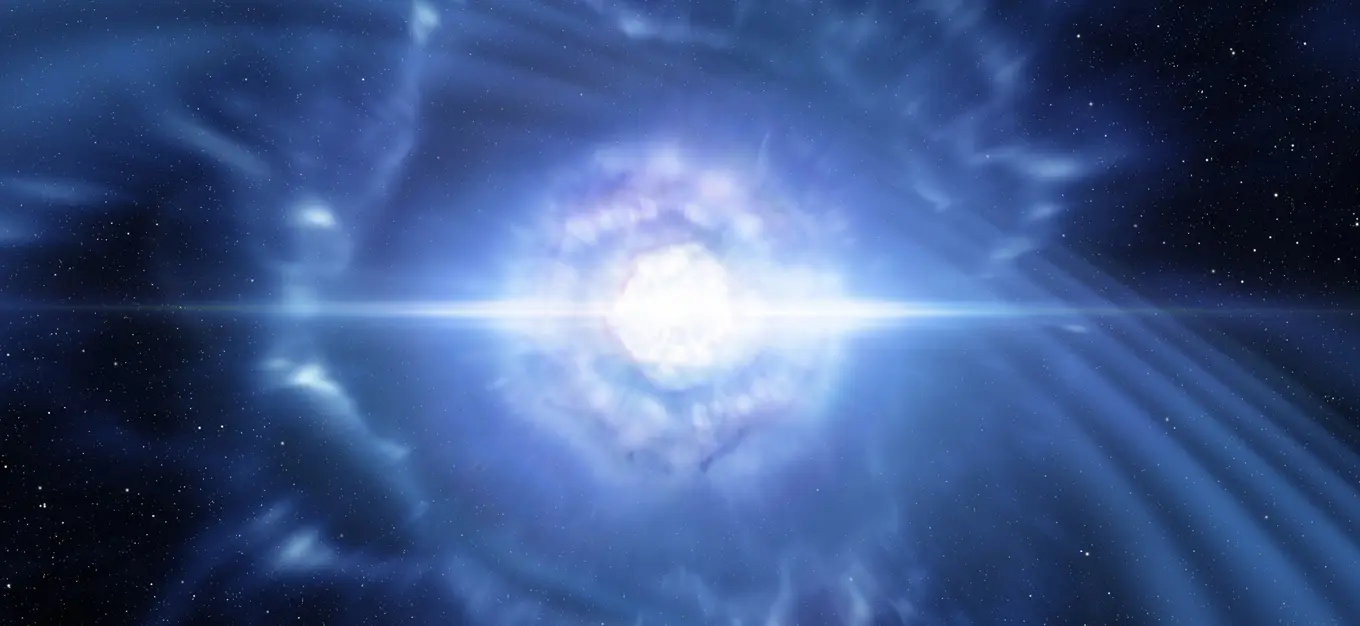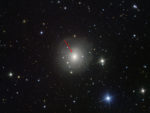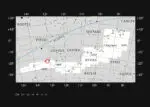ALMA and About 70 Observatories to Probe for LIGO-Virgo's Gravitational Waves Detection
The Atacama Large Millimeter/submillimeter Array (ALMA) joined one of the biggest Target of Opportunity observing campaign ever launched worldwide. After the LIGO-Virgo observatory network detected gravitational waves passing through the Earth and positioned the source on 17 August 2017, many telescopes around the globe identified for the first time the electromagnetic counterpart to a gravitational wave source.
For the first time, astronomers have observed both gravitational waves and electromagnetic radiation (light) from the same event, thanks to a global collaborative effort and the quick reactions of observatories around the world. On 17 August 2017, the NSF's Laser Interferometer Gravitational-Wave Observatory (LIGO) in the United States, working with the Virgo Interferometer in Italy, detected gravitational waves passing the Earth. This event, the fifth ever detected, was named GW170817. About two seconds later, two space observatories, NASA’s Fermi Gamma-Ray Space Telescope and ESA’s INTErnational Gamma-Ray Astrophysics Laboratory (INTEGRAL), detected a short gamma-ray burst (GRB) from the same area of the sky.
The LIGO–Virgo observatory network positioned the source within a vast region of the southern sky, the size of several hundred full Moons and containing millions of stars. As night fell in Chile, many telescopes peered at this patch of sky, searching for new sources. The Swope 1-metre telescope was the first to announce a new point of light. It appeared very close to NGC 4993, a lenticular galaxy in the constellation of Hydra, and VISTA observations pinpointed this source at infrared wavelengths almost at the same time. As night marched west across the globe, the Hawaiian island telescopes Pan-STARRS and Subaru also picked it up and watched it evolve rapidly.
“There are rare occasions when a scientist has the chance to witness a new era at its beginning,” said Elena Pian, an astronomer with INAF, Italy, and lead author of one of the Nature papers. “This is one such time!”
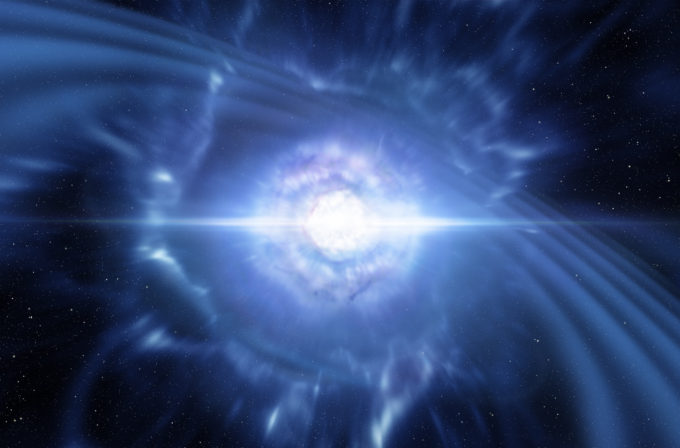
This artist’s impression shows two tiny but very dense neutron stars at the point at which they merge and explode as a kilonova. Such a very rare event is expected to produce both gravitational waves and a short gamma-ray burst, both of which were observed on 17 August 2017 by LIGO–Virgo and Fermi/INTEGRAL respectively. Subsequent detailed observations with many ESO telescopes confirmed that this object, seen in the galaxy NGC 4993 about 130 million light-years from the Earth, is indeed a kilonova. Such objects are the main source of very heavy chemical elements, such as gold and platinum, in the Universe.
Credit: ESO/L. Calçada/M. Kornmesser
The astronomical community launched one of the biggest ever target of opportunity observing campaigns, and about 70 observatories around the world also observed the event.
The almost simultaneous detections of both gravitational waves and gamma-rays from GW170817 raised hopes that this object was indeed a long-sought kilonova and observations have revealed properties remarkably close to theoretical predictions. Kilonovas were suggested more than 30 years ago, but this marks the first confirmed observation.
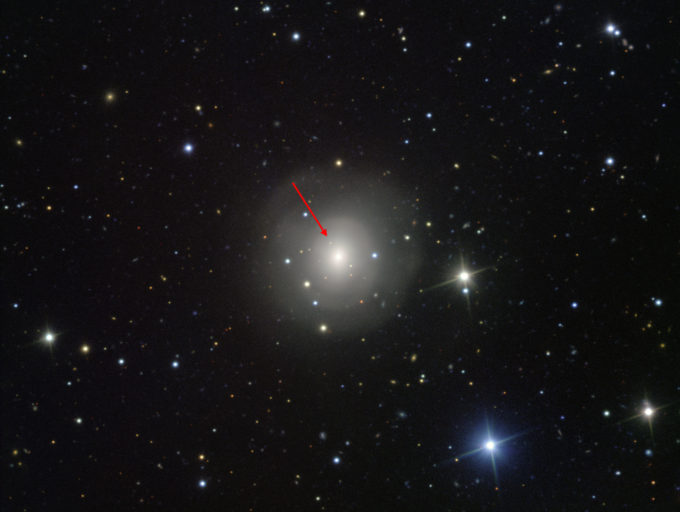
This image from the VIMOS instrument on ESO’s Very Large Telescope at the Paranal Observatory in Chile shows the galaxy NGC 4993, about 130 million light-years from Earth. The galaxy is not itself unusual, but it contains something never before witnessed, the aftermath of the explosion of a pair of merging neutron stars, a rare event called a kilonova (indicated with the arrow). This merger also produced gravitational waves and gamma rays, both of which were detected by LIGO–Virgo and Fermi/INTEGRAL respectively.
Credit: ESO
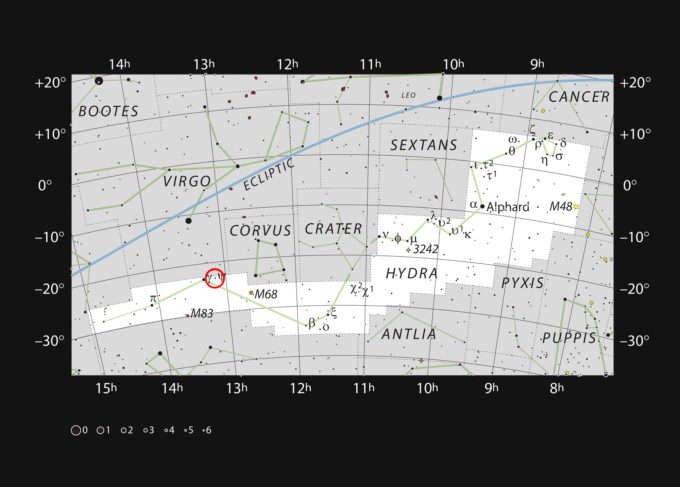
This chart shows the sprawling constellation of Hydra (The Female Sea Serpent), the largest and longest constellation in the sky. Most stars visible to the naked eye on a clear dark night are shown. The red circle marks the position of the galaxy NGC 4993, which became famous in August 2017 as the site of the first gravitational wave source that was also identified in light visible light as the kilonova GW170817. NGC 4993 can be seen as a very faint patch with a larger amateur telescope.
Credit: ESO, IAU and Sky & Telescope
Although observations with ALMA did not reveal any detection, it’s contribution helped to confirm that the "merger took place in empty space rather than inside a dense cloud of dust and gas, which is exactly what we expected if this event is similar to those that produce short gamma-ray bursts,” said astronomer Kate Alexander from Harvard-Smithsonian Center for Astrophysics (CfA) in Cambridge, Massachusetts (USA) and author of a paper appearing in the ApJL. “ALMA, VLA, and Chandra (X-ray) observations show that the merger launched a jet of particles moving at nearly the speed of light, but not pointed directly at Earth. With ALMA, we also detected a supermassive black hole in the center of the galaxy where the merger occurred, which is glowing faintly as it slowly consumes gas."
Links
Additional information
ALMA is a partnership of ESO (representing its member states), NSF (USA) and NINS (Japan), together with NRC (Canada), NSC and ASIAA (Taiwan), and KASI (Republic of South Korea), in cooperation with the Republic of Chile. The Joint ALMA Observatory is operated by ESO, AUI/NRAO and NAOJ.
Contacts
-
Nicolás Lira
Education and Public Outreach CoordinatorJoint ALMA Observatory, Santiago - ChilePhone: +56 2 2467 6519Cel: +56 9 9445 7726Email: [email protected] -
Richard Hook
Public Information Officer, ESOGarching bei München, GermanyPhone: +49 89 3200 6655Cel: +49 151 1537 3591Email: [email protected] -
Charles E. Blue
Public Information OfficerNational Radio Astronomy Observatory Charlottesville, Virginia - USAPhone: +1 434 296 0314Cel: +1 202 236 6324Email: [email protected] -
Masaaki Hiramatsu
Education and Public Outreach Officer, NAOJ Chile
